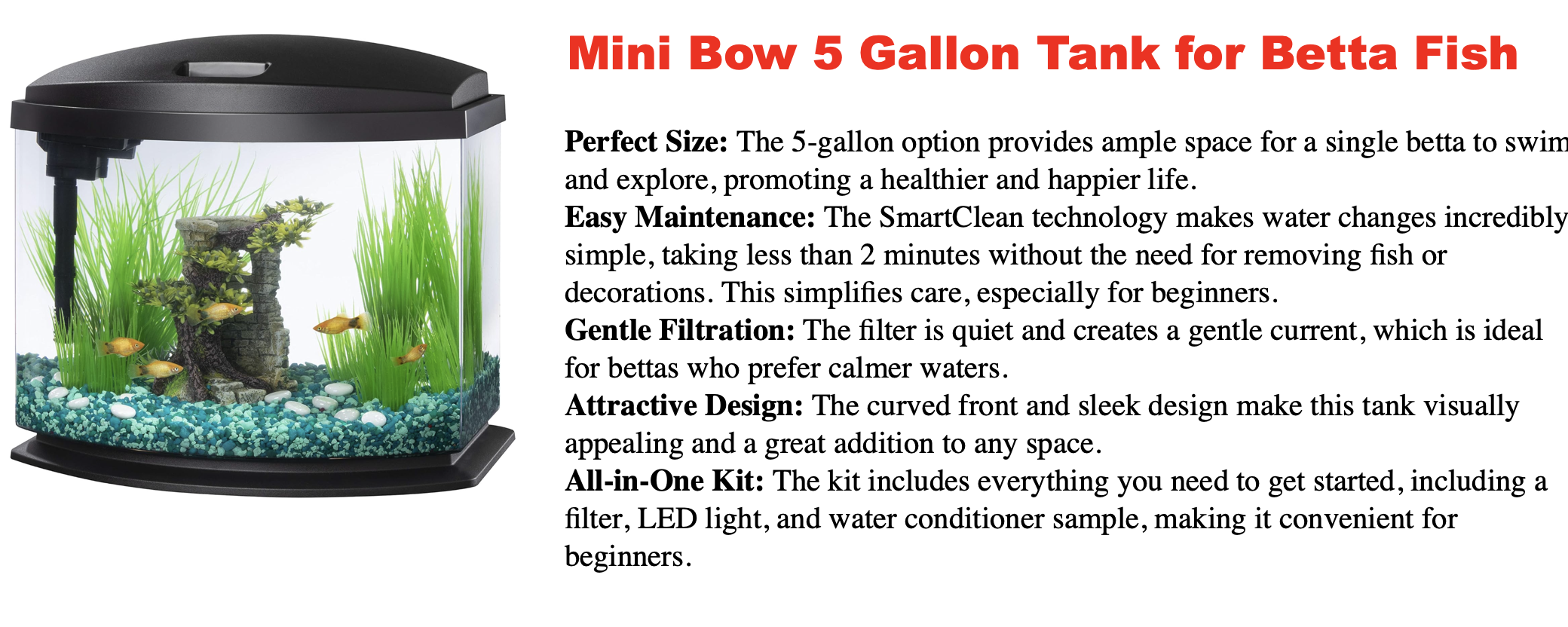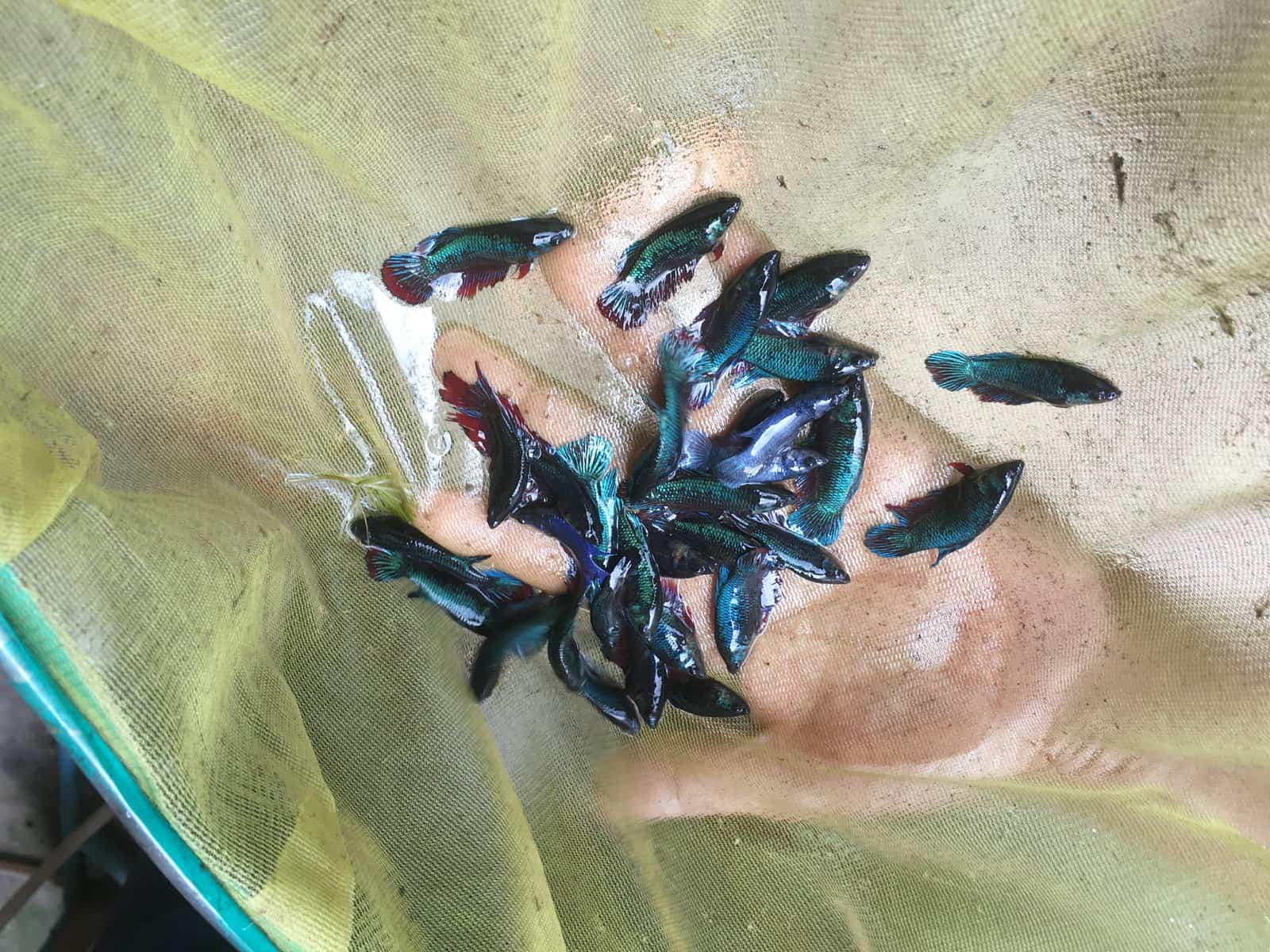Matt
Betta Uberis Wild Betta Fish Care, Setup, Feeding, and More!

Credit: Seriously Fish
The Betta uberis hails from the blackwater peat swamps of Indonesia, bringing a unique presence to dedicated aquarists interested in wild betta care. Their subtle beauty, intriguing behaviors, and specific care needs offer a rewarding challenge beyond the common Betta splendens.
| Care Aspect | Details |
|---|---|
| Tank Size | Minimum 5 gallons for a single Betta uberis. Larger tanks are needed for community setups. |
| Water Parameters | – Temperature: 74-80°F (23-27°C) – pH: 3.5-7.0 – Hardness: Soft to moderately hard |
| Diet | Primarily carnivorous. Feed a variety of high-quality, protein-rich foods like brine shrimp, daphnia, and specially formulated betta pellets. |
| Behavior | Generally peaceful but can be territorial, especially males. Suitable for species-specific tanks or with carefully chosen tank mates. |
| Compatibility | Best kept with other peaceful, small fish that prefer similar water conditions. Avoid fin nippers or overly active species. |
| Tank Setup | Dense vegetation and hiding spots. Low to moderate flow. Provide floating plants to mimic their natural habitat. |
| Lighting | Moderate. Avoid intense lighting to prevent stress. Natural light cycles are beneficial. |
| Water Change | Regular, at least 20-25% biweekly, to maintain water quality and reduce stress. |
Understanding the Needs of Betta Uberis
- True Blackwater Fish: Betta uberis require the soft, acidic conditions characteristic of their natural habitat. Using reverse osmosis (RO) water and a product for blackwater setups is usually essential. Aim for:
- pH: 3.5-6.0
- Hardness: Negligible, almost no detectable KH
- Temperature: 74-80°F (24-27°C)
- Tank Setup: A minimum of 5 gallons is recommended, with larger being better. Densely plant the tank (live or quality silk), and include natural elements like driftwood and Indian almond leaves. Filtration should be gentle, like a sponge or air-driven filter.
- Shy Nature: Wild Betta uberis are typically more timid than domestic Betta splendens. Provide plentiful hiding spots to reduce stress and bring out their natural behaviors.
Feeding Your Betta Uberis
In their natural habitat, these fish are insectivores. Offer a varied diet to ensure optimal health:
- Live Foods: Their favorites include bloodworms, brine shrimp, and daphnia. These should be staples in their diet.
- Frozen Foods: Frozen versions make good substitutes if live foods are unavailable.
- Pellets: Choose high-quality betta pellets with minimal fillers and offer them sparingly as an occasional supplement.
Temperament and Tank Mates
- Best Kept Alone: Male Betta uberis are generally solitary. Females can sometimes co-exist in a larger, heavily-planted tank, but close observation is essential, as aggression can still occur.
- Potential Community Setup: If attempting a community tank, choose companions carefully. Species must tolerate similar water conditions and be small, peaceful, slow-moving fish that won’t intimidate the betta. Opt for species like certain dwarf rasboras or bottom-dwelling Corydoras catfish. Research options thoroughly.
Breeding Betta Uberis
Breeding Betta uberis is an advanced endeavor for experienced betta keepers. Replicating their specific water parameters is crucial for success. Betta uberis are bubble-nesters, and the pair will exhibit elaborate courtship behaviors before spawning. Fry are extremely small and sensitive, requiring specialized feeding with live cultures of microscopic foods.
Additional Notes
- Sourcing: Finding a reliable breeder specializing in wild bettas is crucial for acquiring healthy Betta uberis stock.
- Disease Susceptibility: Wild bettas may be more prone to certain parasites or diseases than domestic bettas. Having a quarantine tank set up before bringing home new fish is recommended.
- Beginner-Friendly? Due to their specific care requirements, Betta uberis are not generally recommended for beginner aquarists.
- Observation is Key: Monitor your Betta uberis’ behavior carefully to ensure they thrive and adjust their care as needed.
The Rewards of Wild Bettas
Betta uberis offer a chance to observe a beautiful fish closer to its natural form. With meticulous care and attention to their unique needs, they will become a captivating centerpiece for your aquarium.
Betta Coccina Care, Fish Tank Setup, Feeding & More


Credit: Seriously Fish
If you want to add a flash of fiery color and fascinating behavior to your aquarium, the Scarlet Betta (Betta coccina) might be your ideal fish! This stunning wild betta comes from Southeast Asia’s peat swamps and streams, offering aquarists a unique and rewarding experience.
What Sets Betta coccina Apart
- Brilliant Coloration: Betta coccina males are named for their intense red coloration that deepens when they are excited or flaring. While smaller and less vibrant, females still possess a beautiful brown-red hue.
- Compact Size: This Betta species is relatively small, making them a suitable option even for modestly-sized aquariums.
- Bubble-Nesting Behavior: Like many bettas, male Betta coccina create intricate bubble nests on the water’s surface as part of their breeding ritual.
Setting Up a Betta coccina Paradise
Click here for my favorite book on betta fish care
- Tank Size: While smaller than some bettas, a minimum of 5 gallons is recommended for a single Betta coccina. A 10-gallon tank offers even more space for these active fish to explore.
- Mimicking Their Habitat: Replicate their natural environment with dense plant growth (live or high-quality silk), plenty of driftwood for hiding spots, and Indian almond leaves to release beneficial tannins.
- Filtration: Choose a gentle filtration system, like a sponge filter, to avoid creating strong currents.
- Water Conditions: Betta coccina thrive in soft, acidic water. Creating these conditions requires special attention:
- pH: 4.5-6.5
- Hardness: Very soft (GH 0-5, KH 0-3)
- Temperature: 75-82°F (24-28°C)
- You’ll likely need to use reverse osmosis (RO) water and remineralize it specifically for blackwater environments.
Feeding Your Scarlet Betta
These carnivorous fish will relish a varied diet. Offer them primarily:
- Live Foods: Bloodworms, daphnia, mosquito larvae, and brine shrimp are all favorites.
- Frozen Foods: A good substitute when live foods aren’t available.
- Pellets: Offer occasionally as a supplement, choosing high-quality betta-specific pellets.
Betta coccina Temperament and Tank Mates
Males of this species are best kept alone. While less aggressive than typical Betta splendens males, they will exhibit territorial behavior. Multiple females may coexist in a densely planted tank, but any signs of aggression require close observation.
If considering a community tank, choosing tank mates requires extra attention. Ideal tank mates are peaceful and inhabit similar acidic, soft water conditions. Some options include small tetras, rasboras, or bottom-dwelling fish like Corydoras. It’s essential to research any potential additions thoroughly.
Additional Considerations
- Sourcing: Locating Betta coccina may require finding a specialized breeder or online retailer concentrating on wild betta species.
- Potential Health Issues: Wild bettas can sometimes be more susceptible to certain parasites or diseases. Buy from reputable sources and consider a quarantine period for new fish.
- Behavioral Enrichment: Provide a stimulating environment with live plants offering broad leaves for resting, varying feeding locations, and occasional rearranging of décor for novelty.
The Allure of the Wild Betta
The Betta coccina offers aquarists a chance to care for a wild betta with dazzling colors and natural behaviors. You can create a thriving environment for this stunning fish with a little extra dedication to their specific needs.
Betta Hendra Care, Tank Setup, and More!


Discover the allure of Betta hendra, a lesser-known gem in the world of wild betta fish. Native to slow-moving streams in Indonesia, these vibrantly colored fish offer a fascinating glimpse into the diverse world of bettas beyond the familiar Betta splendens. Let’s explore what makes Betta hendra unique and how to provide them with the best possible care.
Understanding Betta Hendra
- Appearance: Betta hendra are smaller than typical Betta splendens. Males boast bold red, blue, and iridescent green coloration, particularly when flaring. Females are less vibrant but still beautifully patterned.
- Bubble Nesters: Like many bettas, male Betta hendra create intricate bubble nests for breeding purposes.
- Peaceful Nature: Compared to Betta splendens, Betta hendra is less aggressive, making it potentially suitable for certain community setups.
Elements of Optimal Betta Hendra Care
Click here for my favorite betta fish tank setup
- Tank Size and Layout: While Betta Hendra are a smaller species of Betta, they are active and appreciate spaceto swim. 5 gallons is recommended, with larger tanks providing an even more enriching environment. Replicate their natural environment with dense plant growth (live or high-quality silk plants), driftwood, and Indian almond leaves.
- Water Conditions: Betta hendra prefer a slightly acidic and soft water environment:
- pH: 6.0 – 7.0
- Hardness: Soft to moderate (GH 5-12, KH 0-8)
- Temperature: 76-82°F (24-28°C)
- Filtration: Opt for a gentle filter or air-powered sponge filter that won’t create strong currents.
- Feeding: In the wild, these fish are carnivores. Offer a varied diet including live foods like brine shrimp, daphnia, and bloodworms, with frozen alternatives when necessary. Supplement their diet with a high-quality betta pellet occasionally.
Tank Mates for Betta Hendra
Betta hendra males are best kept singly, though females can sometimes cohabitate in a spacious, heavily-planted tank. If considering a community tank for Betta hendra, choose potential tankmates very carefully:
- Peaceful Species: Opt for small, docile fish that inhabit similar water conditions. Some potential options include Rasboras, certain Tetras, and bottom-dwelling Corydoras catfish.
- Slow-moving: Avoid fin-nipping species or fish with long, flowing fins that might tempt a betta.
- Observation is Crucial: Monitor any community tank closely for signs of aggression or stress.
The Challenge of Breeding Betta Hendra
Breeding Betta hendra follows similar principles to other bubble-nesting Bettas. Prepare a separate breeding tank and condition your pair with high-quality foods. The process involves elaborate courtship and meticulous fry rearing. Thorough research is essential for success.
Things to Remember
- Availability: Betta hendra are less common in the aquarium trade than Betta splendens. You’ll likely need to locate a breeder specializing in wild bettas.
- Sensitivity: Pay close attention to water parameters and avoid drastic changes as Betta hendra can be less forgiving than selectively bred bettas.
The Rewards of Wild Bettas
Betta hendra offers a beautiful and less aggressive alternative to commonly available bettas. Their unique coloration and relatively peaceful nature make them a captivating addition to a thoughtfully-designed aquarium.
Betta Pallifina Care, Tank Setup, and More


Credit: Seriously Fish
If you’re looking for a betta fish that stands out from the crowd, Betta pallifina might be your perfect match. This wild betta boasts stunning iridescent blue and green coloration and an energetic personality. Native to the peat swamp forests of Borneo, Betta pallifina provides a unique and captivating addition to a thoughtfully-designed aquarium.
Understanding the Needs of Betta Pallifina
- Mimicking Their Natural Habitat: Betta pallifina come from blackwater environments, characterized by soft, acidic water and abundant plant life. Replicating these conditions is crucial for their well-being.
- Tank Size: 5 gallons for a single betta is a good start, but larger is better. Opt for a long tank rather than a tall one to provide more swimming space.
- Filtration: A gentle sponge filter or air-driven filter is necessary to avoid strong currents.
- Water Parameters: Betta pallifina are sensitive to water conditions. Aim for these parameters:
- pH: 5.0-6.5
- Hardness: Very soft (GH 0-5, KH 0-3)
- Temperature: 75-80°F (24-27°C)
- Décor: Dense planting with live or silk plants, driftwood, and Indian almond leaves (to release beneficial tannins) recreates their natural environment.
- Tank Mates: Betta pallifina males are best kept alone. A small group of females might be possible in very large, well-structured tanks, but requires careful observation. Even females can sometimes show aggression toward each other.
Feeding Your Betta Pallifina
In the wild, these fish are carnivorous predators. Provide a varied diet for optimal health:
- Live foods: Bloodworms, blackworms, brine shrimp, daphnia – these are their favorites.
- Frozen foods: Substitute for live foods when necessary.
- High-quality pellets: Choose betta-specific pellets as a supplemental food.
Important Considerations for Betta Pallifina
- Water Preparation: Unlike with some betta species, using straight tap water is generally unsuitable for Betta pallifina. They require very soft, acidic water. You’ll likely need to use reverse osmosis (RO) water and remineralize it with products specifically designed for blackwater aquariums. Testing kits to accurately measure pH, KH, and GH are crucial.
- Tank Maintenance: Betta pallifina require pristine water conditions. More frequent partial water changes (up to 50% weekly) and gentle substrate vacuuming will help prevent any water quality issues.
- Rarity and Expense: Betta pallifina are less common in the aquarium trade, making them harder to find and potentially more expensive than standard pet-store bettas.
- Behavioral Observation: Closely monitor Betta pallifina, especially when introducing them to a new tank. They can be a little more skittish than some selectively bred bettas. Providing numerous hiding spots will help them feel secure.
Breeding Betta Pallifina: A Note
Betta pallifina are mouthbrooding bettas, meaning the male holds the eggs in his mouth for incubation. Breeding this species is a complex project requiring extensive research and betta care experience. Successful breeding contributes to the preservation of these beautiful fish.
The Joy of Wild Bettas
Betta pallifina offer a rewarding experience for aquarists seeking something different. Their striking appearance, natural behaviors, and specific care requirements make them a fascinating and captivating addition to the world of betta keeping!

Betta Siamorientalis Care, Tank Setup, Breeding
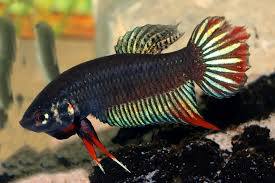

credit: Seriouslyfish.com
Betta fish enthusiasts often focus on the dazzling, long-finned Betta splendens, the common variety found in most pet stores. However, the world of Betta fish is vast, and one particularly fascinating species is the Betta siamorientalis. This wild betta offers something unique – a glimpse into the natural beauty and behaviors of the Betta genus.
Understanding the Wild Betta Siamorientalis
Betta siamorientalis are native to Thailand and Vietnam, inhabiting slow-moving streams and rice paddies. Unlike their selectively-bred relatives, Betta siamorientalis have a shorter, more compact finnage and boast subtle yet beautiful coloration in green, blue, and red shades. These fish are also a part of the bubble-nesting group of bettas, meaning males create elaborate nests to protect their eggs.
Setting Up a Betta Siamorientalis Paradise
I Wish I Knew This About Bettas… Click Here To Read…
- Tank Size: 5 gallons is recommended for a single Betta siamorientalis. However, a larger tank (10 gallons or more) provides additional swimming space and a more stable environment.
- Filtration: Choose a gentle filter like a sponge filter. Wild bettas prefer slow-moving water.
- Heater: This species thrives in warm water between 75-82°F (24 and 28°C). Install a reliable aquarium heater to maintain these temperatures.
- Décor and Plants: Simulate their natural environment with plenty of live or silk plants. Include driftwood or caves for hiding spots and security. Indian almond leaves provide additional benefits, releasing tannins that mimic their native habitat.
- Tank Mates: Male Betta siamorientalis should generally be kept alone. Females can sometimes co-exist in a larger, heavily planted tank, but close monitoring is necessary. Even females might show aggression toward each other.
Feeding Your Betta Siamorientalis
Wild bettas are carnivores. Provide them with a diverse diet to ensure optimal health:
- Live Foods: Their favorites include bloodworms, daphnia, brine shrimp, and mosquito larvae.
- Frozen Foods: A good alternative to live foods, these include frozen bloodworms and brine shrimp.
- Pellets: Choose high-quality betta pellets formulated with minimal fillers. Offer them occasionally to add variety.
Water Conditions for Optimal Health
Betta siamorientalis can be slightly more sensitive to water parameters than selectively-bred bettas. Pay attention to these factors:
- pH: Aim for a pH between 6.0 and 7.5.
- Hardness: Soft or moderately hard water is preferred (GH 5-12, KH 0-8).
- Ammonia and Nitrites: Maintain a zero level for both ammonia and nitrites.
- Nitrates: Keep nitrates below 20 ppm with regular water changes.
Additional Considerations
- Availability and Sourcing: Betta siamorientalis are rarer in the aquarium trade than Betta splendens. You’ll likely need to find a specialized breeder or online retailer concentrating on wild betta species. Always ensure you are sourcing your fish from a reputable source that prioritizes the health of the animals.
- Water Changes: Betta siamorientalis benefit from regular partial water changes (25-50% weekly) to maintain pristine water conditions.
- Jumping: Like other bettas, Betta siamorientalis are excellent jumpers. Securely lid your tank to prevent escapes.
- Tank Cover: Provide floating plants or driftwood that break the surface for resting areas near atmospheric air access.
Breeding Betta siamorientalis
Breeding Betta siamorientalis offers a fascinating but more advanced challenge for aquarists. Unlike the relatively simple process with some Betta splendens, breeding this wild Betta requires dedication and meticulous preparation.Here’s an overview:
- Separate Breeding Tank: Set up a dedicated breeding tank (around 5-10 gallons) with a gentle filter, heater, and plenty of hiding spots for the female.
- Conditioning the Pair: Feed the male and female high-quality live foods for several weeks prior to breeding to promote good health and egg production.
- Introductions and Courtship: Carefully introduce the pair into the breeding tank. Observe their behaviors. The male will build a bubble nest and display elaborate courtship dances to attract the female.
- Spawning: If receptive, the female will develop vertical stripes and join the male under his nest. During spawning, eggs are released and fertilized, and the male carefully collects them in his bubble nest.
- Post-Spawning Care: Remove the female after spawning. The male will usually nest and fiercely guard the eggs. He will not eat during this period.
- Fry Care: Once hatched, tiny fry need specialized foods like infusoria or microworms. As they grow, gradually transition them to larger foods.
Important Notes:
- Breeding any betta can be unpredictable. Sometimes pairs may not be compatible.
- Fry care for Betta siamorientalis can be demanding. Be prepared to raise live cultures of very small foods.
- Thorough research is crucial before attempting to breed Betta siamorientalis. For guidance, connect with experienced breeders or online communities specializing in wild bettas. You can also learn all about betta fish eggs and identifying them here.
Betta Stiktos Care, Tank Setup, Breeding
Betta stikos, a relatively rare species within the aquarium trade, hail from the stagnant waters of the Mekong drainage in Cambodia. These fish prefer environments with little to no current, thriving in ponds, flooded fields, or ditches. Known for their shy yet territorial nature, Betta stikos present a unique challenge and reward for aquarists.


Stikos Nutritional Needs
Betta stikos are carnivorous, requiring a diet consisting of insects and worms to mimic their natural feeding habits. Preferred food sources include:
- live or frozen baby brine shrimp
- daphnia, tubifex,
- bloodworms, and mosquito larvae.
- Pellet food is often rejected in favor of these more natural options.

Companion Compatibility
While generally calm, Betta stikos can exhibit territorial aggression, making the selection of tank mates crucial. Suitable companions may include:
- Micro fishes such as Celestial Pearl Danios or Boraras, known for their calm demeanor
- Shrimps should be added before the Betta stikos to establish territory and reduce the risk of aggression.
Stikos Breeding Insights
Breeding Betta stikos involves a series of steps aimed at encouraging natural behaviors and ensuring the safety of both the adults and the offspring:
- Introduction and Courtship: A clear divider may be used to introduce the male and female, allowing them to acclimate to each other’s presence without direct contact. This prevents premature aggression and allows for the display of behaviors that are part of the courtship process.
- Bubble Nest Construction: The male constructs a bubble nest at the water’s surface, signaling readiness for breeding. The environment should support this behavior with calm water and suitable nesting materials.
- Spawning: Following successful courtship, the female releases eggs which the male fertilizes and places into the bubble nest. Careful monitoring is essential to manage potential aggression from the male towards the female post-spawning.
Stikos Fry Care
The post-spawning care of Betta stikos fry involves a delicate balance of appropriate feeding and maintaining ideal water conditions:
- Start with infusoria or specially formulated liquid fry food, transitioning to baby brine shrimp as the fry grow.
- Frequent, small feedings are crucial to meet the high metabolic demands of the developing fry without compromising water quality through overfeeding.
Stikos Disease Prevention and Management
Common diseases affecting Betta fish, including Betta stikos, often stem from poor water quality or stress. Fin rot, Ich, and velvet disease are notable concerns, with prevention focusing on maintaining clean water, stable environmental conditions, and prompt treatment with appropriate medications when necessary. Learn more about betta diseases here.
Setting Up the Ideal Tank
Size and Tank Size and Layout: A tank of at least 30cm is recommended for individual Betta stikos, with larger sizes being better to accommodate their territorial instincts and provide space for potential tank mates. The layout should mimic their natural habitat as closely as possible, including features such as:
- Low-tech planted areas
- Makeshift caves and driftwood for hiding
- Minimal bright lighting to replicate the dimly lit environments of their native habitats.


Water Conditions: Achieving and maintaining the correct water conditions is crucial for the health of Betta stikos. The ideal parameters include:
- Temperature: 22-26°C
- pH levels: 5-7.5
- Water hardness: Up to 10°dGH
- Regular monitoring and maintenance to ensure these conditions remain stable, especially during the breeding process.
Caring for Betta stikos is a rewarding endeavor that requires attention to detail in tank setup, water conditions, nutrition, and breeding practices. As with all aquarium inhabitants, a commitment to ongoing learning and adaptation to the needs of Betta stikos will ensure their health and happiness within the aquatic community.
This guide has covered the essentials, but remember, each Betta stikos is an individual, and observation and responsiveness to their specific behaviors and needs will further enhance your success in caring for these exquisite fish.
Betta Fish Types & Species For Your Aquarium
If you think bettas are just vibrant fighters in bowls, think again! The world of wild betta fish is a realm teeming with diversity and surprising behaviors. With a staggering 73 known species, these stunning fish are far more than their domesticated cousins.
Wild bettas offer captivating alternatives to the ubiquitous Siamese fighting fish. From tiny bubble-nesters to larger, fascinating mouthbrooders, each species boasts unique adaptations and personalities.
Types of Betta Fish
Here’s a
Betta Fish Are Not Easy To Care For! Click Here For What You Need to Know…
Here’s a glimpse into the diverse world of wild betta species:
- Betta Splendens (Siamese Fighting Fish): The iconic ancestor of domestic bettas, this species is known for its bold coloration and somewhat aggressive nature.
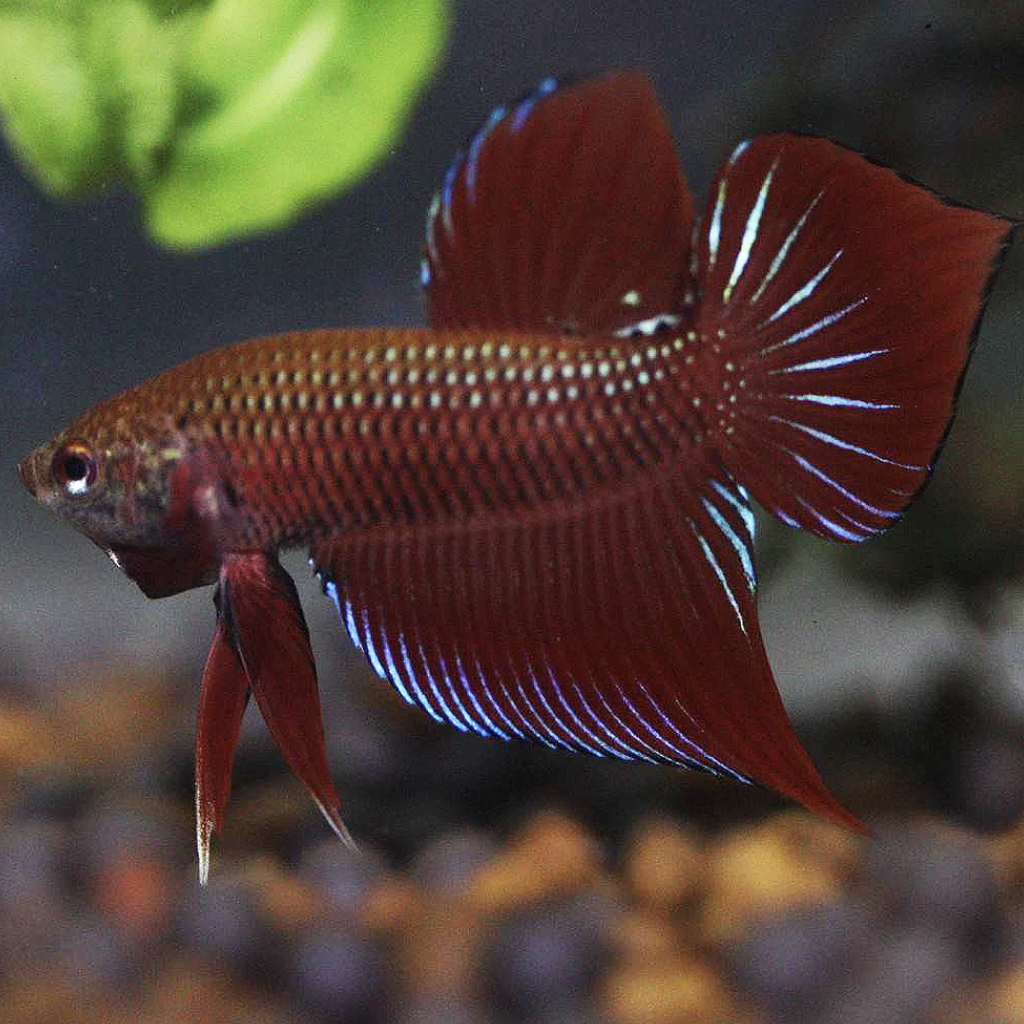

- Betta Imbellis (Peaceful Betta): This Malaysian beauty sports a shimmering green body with a striking red marking on its tail fin. They truly live up to their ‘peaceful’ name.
![]()
![]()
- Betta Smaragdina (Emerald Betta): This Thai stunner shimmers with iridescent green-blue scales and bursts of red in its fins. They’re one of the hardiest wild bettas, great for beginners!
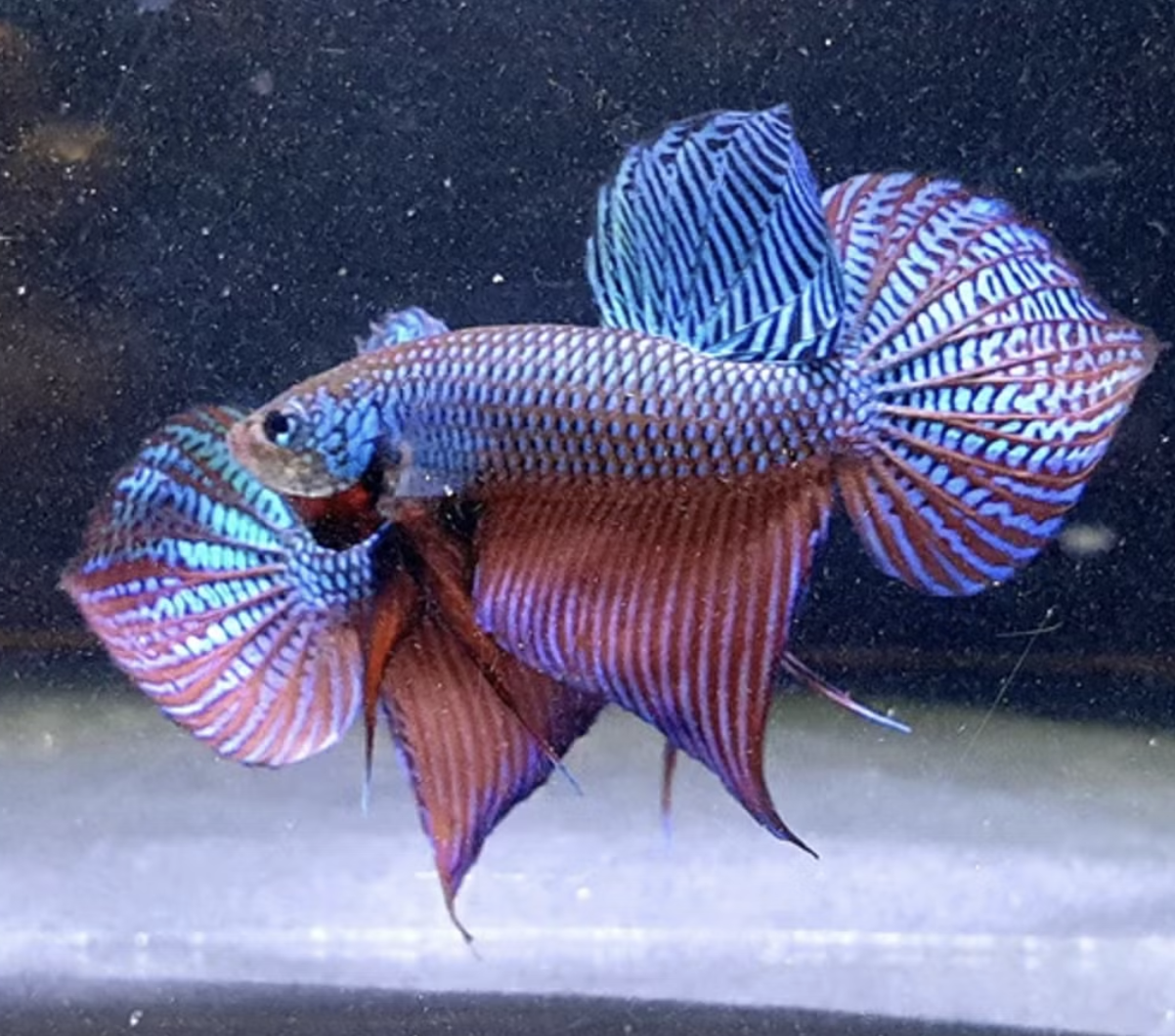

- Betta Mahachaiensis (Mahachai Betta): Another Thai native, this betta sports metallic green scales, red fins, and a unique ‘mask’ of black across the face. They are close cousins of Betta splendens.


- Betta Macrostoma (Brunei Beauty): This large and powerful betta is a paternal mouthbrooder prized for its distinct markings. Males can change patterns in a flash, becoming remarkably colorful under certain conditions.
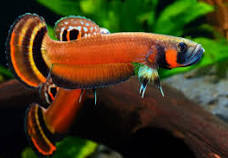

- Betta Coccina (Scarlet Betta): Bold red fins and a deep crimson body mark this fiery fish. They are mouthbrooders found in Indonesian peat swamps, where the water is soft and acidic.


- Betta Foerschi: A Bornean mouthbrooder that thrives in acidic waters and shares some coloration with Betta hendra.
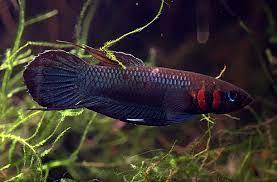

- Betta Rubra: This Sumatran wonder wows with its deep red hue. Males are fiercely devoted parents, protecting eggs and fry.
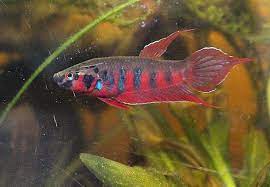

- Betta Channoides (Snakehead Betta): Instantly recognizable by its bright orange-red tones and surprisingly peaceful disposition. It’s perfect for those interested in a community of wild bettas.
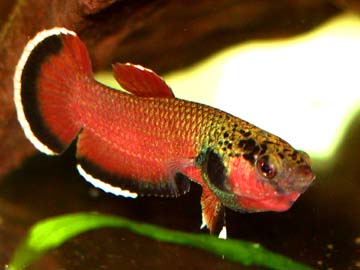

Stiktos Group
- Betta Stiktos: A tiny betta with a big personality. They sport a black body with a scattering of iridescent blue spots. Despite their size, males can be feisty and are known for their beautiful bubble nests.


Siamorientalis Group
- Betta Siamorientalis: This species features a striking blue body with a contrasting red splash on the gill cover. Known as the blue betta, it is also known for being relatively peaceful, they can sometimes be kept in community settings.


Commonly Found
-
Betta Pallifina: A mesmerizing betta with an almost translucent body and delicate fins sporting hints of blue and red. They prefer cooler waters than many other wild betta species.


-
Betta Hendra: This species shares some similarities with Betta foerschi, though it tends to have a more subdued coloration. They are mouthbrooders found in the same habitats as Betta foerschi.


-
Betta Uberis: Another mouthbrooding betta with a unique beauty. Their subdued body coloration is accented by vibrant blues and reds in their fins, resembling fireworks.


This list includes scientifically described species and some known by their locality or provisional names. The Betta genus is remarkably diverse, and new species are occasionally described as research progresses.
-
B. splendens complex (Fighting Fish)
• Betta splendens (Siamese fighting fish)
• Betta imbellis (Crescent betta)
• Betta smaragdina (Emerald betta)
• Betta mahachaiensis
• Betta siamorientalis
• Betta stiktosB. coccina complex (Wine Red Bettas)
• Betta coccina
• Betta livida
• Betta rutilans
• Betta tussyae
• Betta persephone
• Betta burdigala
• Betta brownorum
• Betta uberis
• Betta hendra
• Betta miniopinnaB. pugnax complex
• Betta pugnax (Penang betta)
• Betta fusca (Dusky betta)
• Betta prima
• Betta pallida
• Betta pulchra
• Betta schalleri
• Betta stigmosa
• Betta lehi
• Betta cracens
• Betta enisae
• Betta ferox
• Betta apollon
• Betta kuehnei
• Betta raja
• Betta breviobesaB. unimaculata complex
• Betta unimaculata
• Betta macrostoma (Spotfin betta)
• Betta patoti
• Betta ocellata
• Betta gladiator
• Betta ideii
• Betta compunctaB. albimarginata complex
• Betta albimarginata
• Betta channoidesB. akarensis complex
• Betta akarensis (Akar betta)
• Betta balunga
• Betta chini
• Betta ibanorum
• Betta obscura
• Betta pinguis
• Betta antoni
• Betta aurigans
• Betta nuluhonB. anabatoides complex
• Betta anabatoides (Giant betta)
• Betta midasB. bellica complex
• Betta bellica (Slim betta)
• Betta simorumOther notable species
• Betta foerschi
• Betta rubra
• Betta dimidiata
• Betta edithae
• Betta picta
• Betta taeniata
Types of Betta Fish Tails
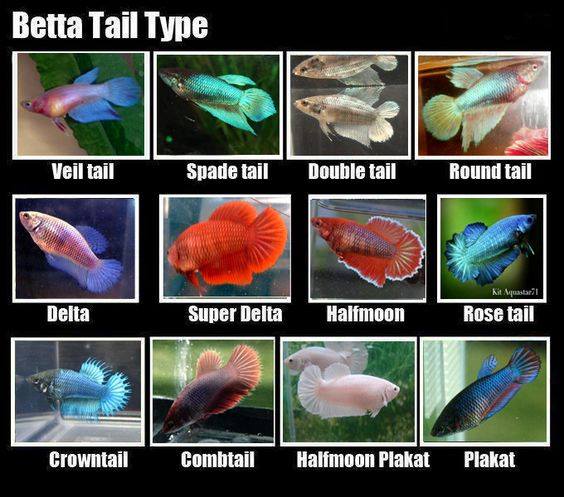

Betta Fish Tail Types
| Tail Type | Description | Care Difficulty | Special Needs |
|---|---|---|---|
| Veil Tail | Long, flowing, and asymmetrical tails | Easy | None |
| Crowntail | Spiky fins due to reduced webbing between the rays | Moderate | Frequent water changes to prevent fin damage |
| Halfmoon | Tails spread to 180 degrees, resembling a half-moon | Moderate | Prone to fin tears, needs gentle water flow |
| Double Tail | Two distinct caudal fins | Difficult | Susceptible to swim bladder disorder |
| Plakat | Shorter, more rounded fins, similar to wild Betta fish | Easy | None |
| Delta Tail | Triangular-shaped tails that widen at the tip | Moderate | Needs larger tank due to fin size |
| Super Delta | Enhanced Delta Tail that approaches a 180-degree spread | Moderate | Same as Delta Tail with additional care for fin health |
| Rosetail | Excessive branching of the fin rays | Difficult | Prone to tail-biting, needs monitoring |
| Feathertail | More extensive ruffles than Rosetail | Difficult | Prone to tail-biting, needs monitoring |
| Spade Tail | Tails shaped like a spade from a deck of cards | Moderate | None |
| Combtail | Mix between Crowntail and other types, with webbing extending more than Crowntails but less than traditional fins | Moderate | None |
| Round Tail | Rounded fins without the taper seen in Deltas | Easy | None |
| Elephant Ear (Dumbo) | Large pectoral fins resembling elephant ears | Moderate | Gentle water flow due to large pectoral fins |
| Over-Halfmoon | Tails extend beyond 180 degrees | Difficult | Similar to Halfmoon, with additional fin care |
| Half-Sun | Mix between Halfmoon and Crowntail, with rays extending beyond the caudal fin’s membrane | Difficult | Similar to Halfmoon, with additional fin care |

Embarking on Your Wild Betta Adventure: A Guide
Ready to bring the vibrancy of wild bettas into your aquarium? Click here for our article on betta fish care.
Consider these factors:
- Beginner’s Bettas: If you’re new to wild bettas, opt for species from the Betta splendens complex, like Betta imbellis, as they tend to be more forgiving.
- Mouthbrooder Marvels: For a taste of this unique behavior, the manageable size and potential for group living make Betta channoides a good starter.
- Advanced Beauty: Betta macrostoma (Brunei Beauty) rewards experienced aquarists seeking a challenge with its dazzling appearance.
Caring for a Piece of the Wild
- Know Your Betta: Research is essential! Understand your chosen species’ specific water needs, ideal tank setup, and dietary preferences.
- Nature’s Touch: To promote your betta’s health, replicate their natural environments, use plants and hiding places, and ensure proper water chemistry.
- Temperament Matters: Some wild bettas, particularly the wild-type Betta splendens, are territorial. Consider solitary setups or compatible tankmates carefully.
The Allure of Wild Bettas
Exploring the world of wild bettas is a journey rich in beauty and responsibility. From the gentle Betta imbellis to the dazzling Betta rubra, enthusiasts of all levels can discover a treasure. By responsibly caring for them, you gain a dazzling aquarium centerpiece while supporting the understanding and conservation of these fascinating fish.
How To Take Care of a Betta Fish
Betta fish are resilient, but proper care is essential to ensure they live up to their potential lifespan of 3-5 years, and sometimes even longer. In this guide, you’ll learn everything you need to know to provide the best care for your betta fish and create a healthy, stress-free environment.
Betta Care: Healthy vs. Sick Checklist
Recognizing signs of health and illness early on is key to preventing more serious problems. Below are the characteristics of both healthy and sick betta fish:
- Healthy Betta Characteristics:
- Bright, vibrant colors
- Active and curious behavior
- Smooth, undamaged fins
- Clear eyes and a regular appetite
- Regular swimming and exploration
- Frequent visits to the water’s surface for air
- Sick Betta Characteristics:
- Dull or faded colors
- Lethargy or excessive hiding
- Clamped or tattered fins
- Loss of appetite, bloating, or weight loss
- White spots, black edges on fins (possible signs of fin rot), or visible swelling
- Abnormal swimming patterns or labored breathing
Water Conditions: pH, Ammonia, and Water Chemistry
Maintaining the correct water parameters is crucial for your betta’s well-being. Poor water quality is a leading cause of stress and illness in betta fish.
- pH Levels:
- Bettas thrive in water with a pH range of 6.5 to 7.5.
- To lower pH, you can add driftwood, Indian almond leaves, or a pH-lowering solution.
- To raise pH, use crushed coral, limestone, or pH-raising products.
- Regularly monitor pH levels using a pH test kit to prevent sudden fluctuations, which can cause stress.
- Ammonia, Nitrite, and Nitrate Levels:
- Ammonia: Should always be 0 ppm. Even trace amounts of ammonia can cause severe stress and burns to a betta’s gills.
- Nitrite: Should also be 0 ppm. Nitrite toxicity causes oxygen deprivation, leading to stress and eventual death.
- Nitrate: Should be kept below 20 ppm. Nitrates are less toxic but can contribute to poor water quality and algae growth.
- Water Hardness:
- General Hardness (GH): Soft to slightly hard water (50-150 ppm) is preferred for bettas.
- Carbonate Hardness (KH): A 3-5 dKH range helps buffer and stabilize the pH, reducing harmful fluctuations.
- Filtration and Water Treatment:
- Use a low-flow filter to prevent damaging your betta’s delicate fins.
- Treat water with Seachem Prime or another water conditioner to neutralize chlorine, chloramine, and heavy metals from tap water.
- Keep a testing kit on hand to regularly check water parameters.
- Tank Size and Environment
Creating the ideal environment is vital to your betta’s overall health and happiness.
- Tank Size: The minimum recommended fish tank size for a betta is 5 gallons. Larger tanks are more stable and easier to maintain and provide a betta with ample room to swim and explore.
- Lighting and Temperature:
- Use a gentle aquarium light with a regular 8-12 hour light cycle. Do not place the tank in direct sunlight, as this can lead to dangerous temperature fluctuations.
- Maintain water temperature between 76-81°F (24-27°C). A heater with an adjustable thermostat is necessary, especially in cooler climates.
- Tank Mates: While bettas are territorial and aggressive, they can cohabitate with certain peaceful species such as snails, Corydoras, or small, non-aggressive fish like neon tetras. Be cautious and monitor interactions closely.
- Plants, Hideouts, and Decorations
Bettas enjoy a well-decorated tank that mimics their natural environment.
- Live Plants: Plants like Java Moss, Anubias, and Amazon Swords offer both beauty and functionality by absorbing nitrates and providing hiding spots.
- Hideouts: Bettas like to feel safe, so provide smooth caves, silk plants, and hideaways. Avoid sharp objects that could damage their fins.
- Decoration Placement: Ensure there’s plenty of open space for swimming while still offering sheltered areas for resting.
- Water Maintenance and Cleaning
Maintaining water quality is key to preventing illness and ensuring a healthy environment.
- Water Changes:
- Perform weekly water changes of 25% to keep water parameters stable and reduce toxins.
- In smaller, unfiltered tanks, more frequent changes may be needed.
- Cleaning the Tank:
- Gravel vacuums are great for cleaning the substrate and remove excess food and waste.
- Rinse decorations in used tank water (never use soap) to prevent algae buildup.
- Betta Diet and Feeding Guidelines
A varied diet is critical to your betta’s health and vibrant colors.
- Dietary Needs:
- Bettas are carnivores and do best on a protein-rich diet.
- Staple foods include high-quality betta pellets made from fish or shrimp meal.
- Treats and Supplements: Offer live, frozen, or freeze-dried foods like bloodworms, daphnia, and brine shrimp as occasional treats (2-3 times a week).
- Feeding Schedule:
- Feed 2-3 pellets twice a day, ensuring you only offer what they can eat in 2-3 minutes.
- Avoid overfeeding to prevent bloating and poor water quality.
- Fasting Day:
- Fast your betta for one day per week to help with digestion and to help reduce the risk of bloating.
- Betta Health Tips and Troubleshooting
Here are some common problems and tips for resolving them.
- Fin Rot:
- Symptoms: Fins appear ragged, torn, or have black/brown edges.
- Causes: Poor water quality, injury, or stress.
- Treatment: Improve water conditions, add aquarium salt, and use fin rot medications like API Fin & Body Cure.
- Swim Bladder Disorder:
- Symptoms: Difficulty swimming, floating upside down, or sinking.
- Causes: Overfeeding or constipation.
- Treatment: Fast your betta for 24-48 hours, then offer a blanched pea or high-fiber food.
- Ich (White Spot Disease):
- Symptoms: Small white spots and dots on the body and fins, scratching against surfaces.
- Causes: Parasite infection.
- Treatment: Increase tank temperature to 82°F gradually, treat with anti-parasitic medication.
- Ammonia Poisoning:
- Symptoms: Red gills, gasping for air at the surface, lethargy.
- Causes: High ammonia levels in the tank.
- Treatment: Immediate water changes and use of a detoxifying conditioner like Seachem Prime.
- Constipation/Bloating:
- Symptoms: Swollen belly, reduced appetite.
- Causes: Overfeeding or poor diet.
- Treatment: Fast for a day or two and offer a blanched pea or daphnia to aid digestion.
Wild Betta Fish 101: Care, Tank, Breeding & More
Did you know that the dazzling betta fish you see in pet stores started their journey in the muddy rice paddies of Southeast Asia? These vibrant fish, known for their flowing fins and feisty attitudes, have a wild ancestor that is quite different from the familiar pet. Let’s explore the world of wild betta fish, learn how they thrive in their complex natural environments, and consider the importance of their conservation.
Sadly, many wild betta populations are dwindling. Habitat loss and over-collection threaten these beautiful creatures. This guide goes into the fascinating lives of wild bettas, providing tips for responsible care and highlighting the importance of conservation — however if you’re looking for an in-depth article please check out our master guide here.
Wild Betta Species
Betta fish aren’t a single uniform species! There’s a surprising amount of diversity within the Betta genus, with over 70 known types. Let’s look at a few of the most popular wild betta species kept by aquarists:
- Betta splendens (Siamese Fighting Fish): This is the most familiar wild betta, the ancestor of our brightly colored pet store companions. In their native Southeast Asian habitats, they inhabit shallow ponds, marshes, and rice paddies. Even in the wild, their care needs resemble their domesticated counterparts.


Photo credit: Franks bettas
- Betta imbellis (Peaceful Betta): These bettas are smaller and less aggressive than Betta splendens. Their natural habitat is similar, and they are good candidates for community tanks with other peaceful, small fish.
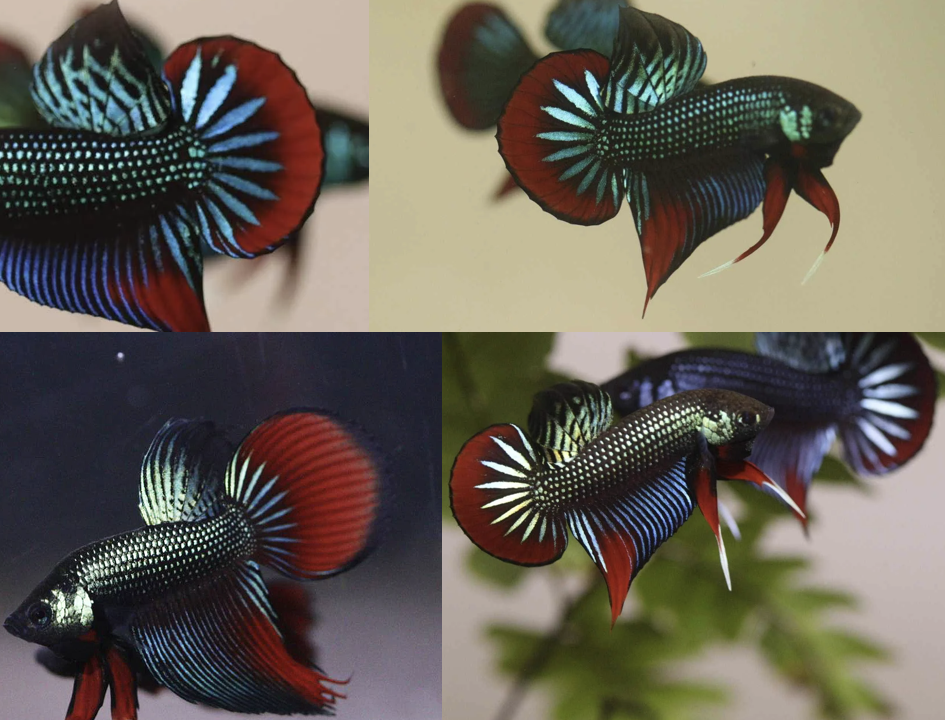

Photos from Franks Bettas
- Betta smaragdina (Emerald Betta): This betta glows with iridescent green and blue scales. They require a heavily planted environment with soft, acidic water to reach their full potential.


Photo credit: Fishy hub
Bubble Nesting vs. Mouthbrooding Betta Fish
Betta fish have two fascinating ways of caring for their young: bubble nesting and mouthbrooding.
- Bubble Nesters: Like Betta splendens, male bubble nesters create intricate floating nests from saliva bubbles. Eggs are deposited in the nest, and the male fiercely guards them.
- Mouthbrooders: Some betta species, like Betta imbellis, are mouthbrooders. The male or female carries the eggs in their mouth until they hatch, offering incredible protection.
These breeding behaviors affect how you care for wild bettas. Bubble nesters need a calm water surface, while mouthbrooders may need specialized environments to encourage spawning. Understanding how wild betta fish reproduce offers insights into their unique needs in captivity. We have a great article on betta fish eggs here.
Wild Betta Tank Setup
Replicating a wild betta’s natural habitat is crucial for their well-being. Here’s what you need to know:
- Tank Environment: Wild bettas typically inhabit shallow, slow-moving waters. Opt for smaller tanks (5-10 gallons for most species), densely planted with aquatic vegetation. Indian almond leaves offer beneficial tannins and mimic their native environment.
- Filtration Systems: Gentle filters, like sponge filters, are best. Wild bettas aren’t used to strong currents. You can also clean the tank using a suction vacuum.
Wild Betta Fish Care
- Comprehensive Care: Feed your wild bettas a varied diet of high-quality live or frozen foods like bloodworms, brine shrimp, and daphnia. Maintain pristine water conditions, and carefully select tankmates if you plan on a community aquarium (small, peaceful fish only). Breeding wild bettas can be rewarding, but research your specific species’ needs.
- Dealing with Diseases: The best disease prevention is a clean tank with optimal water parameters. Research common ailments in wild bettas and prioritize reducing stress in your aquarium.
Where to Buy Wild Betta Fish
- Ethical Purchasing: Choose breeders that prioritize conservation and ethical breeding practices. Look for certifications or a reputation for responsible sourcing.
Conclusion
Wild betta fish are incredible creatures with intricate behaviors and fascinating adaptations. By understanding their needs and respecting their delicate habitats, we can enjoy these captivating fish responsibly and help conserve them for future generations. Let’s all do our part to protect these remarkable jewels of Southeast Asia!
Where Do Betta Fish Live In The Wild
Bettas are natively found in:
Rice paddies: Shallow, warm waters ideal for bettas, providing abundant food and serving as mosquito control.
Peat swamps: Acidic, nutrient-rich waters with dense vegetation, offering a sanctuary for many betta species.
Slow-moving streams and ponds: Calm waters with aquatic plants, providing hiding spots and ambush opportunities.
Blackwater streams: Dark, tannin-rich waters formed by decomposed organic matter, home to specialized betta species.

Where Do Betta Fish Come From?
Click here if you’re contemplating getting a betta fish… this is a MUST READ…
Wild Betta Characteristics by Region
Thailand, Laos, and Cambodia
In Thailand, Laos, and Cambodia, bettas from the splendens complex are prevalent. These include Betta splendens, Betta smaragdina, and others, known for their bubble-nesting behavior. These species display a range of behaviors and morphologies suited to the shallow, often oxygen-poor waters of rice paddies and slow-moving streams.
Malaysia
Malaysia is home to Betta imbellis and other less-known species like Betta bellica and Betta pugnax. The habitats here resemble those in Thailand but also include unique ecological conditions that influence the behaviors and physical characteristics of local betta populations.
Borneo
On the island of Borneo, betta species such as Betta macrostoma and Betta albimarginata thrive in distinctly tropical environments, characterized by rainforests and a pH as low as 3-4. These conditions foster a different set of adaptations, particularly in terms of breeding and territorial behavior.
Indonesia
In Indonesia, particularly on the islands of Sumatra and Java, a variety of betta species inhabit highland streams and similar environments. Species like Betta picta and Betta coccina are adapted to these habitats, showcasing the diverse ecological roles bettas play across the archipelago.
Bettas In The Wild – Native Habitats
| Region & Natural Habitat | Some Common Wild Betta Species |
|---|---|
| Thailand | Betta splendens (Siamese fighting fish), Betta smaragdina (Emerald betta), Betta imbellis (Peaceful betta) |
| Cambodia | Betta stiktos, Betta siamorientalis |
| Laos | Betta falx, Betta simplex |
| Vietnam | Betta mahachaiensis, Betta prima |
Wild Betta Characteristics
The wild relatives of the domestic betta are generally less conspicuous, exhibiting subdued hues that serve as camouflage rather than decoration. Among the Betta genus, the splendens complex is perhaps the most famous, consisting of species like Betta splendens itself and its close relatives, which share similar morphological and behavioral traits. In contrast, species found on the islands of Borneo and Indonesia, such as Betta macrostoma, showcase different adaptations to their unique environments.
Natural Habitat Types Bettas Live In
In the wild, bettas inhabit shallow, warm waters like rice paddies, swamps, and slow-moving streams. These habitats are often low in oxygen, which has led bettas to evolve a labyrinth organ—a specialized part of their respiratory system that allows them to breathe air directly from the surface. This adaptation is crucial for survival in stagnant waters that heat up quickly under the tropical sun, reaching temperatures between 74°F and 85°F.
- Warm, tropical waters: Bettas need the temperature to stay within a comfortable range for their health.
- Shallow depth relates to their ability to gulp air from the surface when needed.
- Dense vegetation: Plants offer hiding places, a source of food, and even places for bettas to build nests.
- Tannins: As leaves and other organic matter decay in the water, they release tannins. These have a slightly brown tint but provide health benefits for bettas.
How Long Do Betta Fish Live
The typical lifespan for a betta fish is about 2-4 years, although they can sometimes live up to 5 years with optimal care. Several factors contribute to how long your betta may live, including the quality of their tank environment, diet, genetics, and stress levels. It’s important to remember that betta fish purchased from pet stores may already be around a year old, so even with the best care, their time with you may be shorter. Proper tank maintenance, a nutritious diet, and a low-stress environment are key to helping your betta fish live a long, healthy life. Click here to learn more.
Wild Betta Behavior
Wild bettas are known for their complex behaviors, especially regarding territory and breeding. Males are fiercely territorial, often engaging in displays of fin spreading and color flaunting to deter rivals and attract mates. The species can be divided into two main reproductive groups: bubble-nesters and mouth-brooders. Bubble-nesters, like Betta splendens, create floating nests of air bubbles to protect their eggs and fry, while mouth-brooders, such as Betta macrostoma, carry their offspring in their mouths to ensure their safety.
Other Inhabitants and Environmental Interactions
Bettas share their natural habitats with various other species, including gouramis, rasboras, and barbs. These co-inhabitants often play a role in the dynamics of betta behavior, influencing everything from territorial disputes to breeding success. The dense vegetation and organic materials found in these waters provide hiding spots and breeding grounds for bettas and contribute to the ecological balance by offering shelter and resources to other species.
- Rice paddies: While man-made, these shallow, flooded fields provide a perfect home for bettas.
- Ponds and swamps: Lush with vegetation and teeming with insect life, these slow-moving waters suit bettas well.
- Slow-moving streams: The gentle flow of water is important, but some areas with low oxygen have led bettas to adapt by breathing air directly from the surface.
Reproduction Details
Reproductive strategies among wild bettas are fascinating and varied. Bubble-nesters guard their offspring until they are free-swimming, while mouth-brooders provide a mobile sanctuary for their eggs and fry, showcasing a remarkable commitment to parental care. These behaviors reflect adaptations to environmental pressures and predators, highlighting the complexity of life strategies evolved by bettas over millennia.
Conclusion
Understanding the natural conditions and behaviors of wild betta fish provides crucial insights for anyone interested in keeping these fish as pets. Aquarium enthusiasts can ensure a healthier, more vibrant life for their bettas by replicating aspects of their natural habitats and respecting their behavioral needs. Beyond decorative elements, bettas are a link to Southeast Asia’s rich and diverse aquatic life, deserving of both admiration and responsible stewardship.


